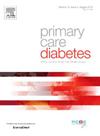Association between insurance status and prevalence of diabetic retinopathy in patients with diabetes in the United States from 2011 to 2020
IF 2.6
4区 医学
Q3 ENDOCRINOLOGY & METABOLISM
引用次数: 0
Abstract
Aim
To determine whether an association exists between health insurance and diabetic retinopathy (DR) prevalence in adults with diabetes.
Methods
An analytical cross-sectional study was conducted utilizing the National Health and Nutrition Examination Survey database. 4530 Patients aged ≥ 18 with diabetes from 2011 to 2020 with various insurance types (no insurance, private, Medicare, Medicaid, or other) were evaluated for prevalence of DR, including covariates. Unadjusted and adjusted logistic regression analysis were conducted to calculate odds ratios (OR) and 95 % confidence intervals (CI).
Results
There was no significant association between insurance status and DR prevalence when adjusting for confounders. OR for DR in patients without insurance, Medicare, Medicaid, or other insurance compared to those with private insurance were 1.13 (95 % CI 0.74–1.71), 0.78 (95 % CI 0.54–1.13), 1.20 (95 % CI 0.80–1.81), and 0.81 (95 % CI 0.47–1.37) respectively. However, factors like age ≥ 65 and use of diabetes medication were associated with reduced DR prevalence.
Conclusion
Although insurance status alone does not have an association with the prevalence of DR, this study highlights several confounding variables that potentially influence previously reported associations between insurance status and DR.
2011年至2020年美国糖尿病患者的保险状况与糖尿病视网膜病变患病率之间的关系
目的:确定健康保险与成人糖尿病视网膜病变(DR)患病率之间是否存在关联。方法:利用国家健康与营养检查调查数据库进行分析性横断面研究。4530例年龄≥ 18岁的2011 - 2020年各种保险类型(无保险、私人、医疗保险、医疗补助或其他)的糖尿病患者进行了DR患病率评估,包括协变量。进行未校正和校正logistic回归分析,计算优势比(OR)和95% %置信区间(CI)。结果:在调整混杂因素后,保险状况与DR患病率之间没有显著关联。无保险、医疗保险、医疗补助或其他保险的患者与有私人保险的患者相比,DR的OR分别为1.13(95 % CI 0.74-1.71)、0.78(95 % CI 0.54-1.13)、1.20(95 % CI 0.80-1.81)和0.81(95 % CI 0.47-1.37)。然而,年龄≥ 65岁和使用糖尿病药物等因素与DR患病率降低有关。结论:虽然保险状况本身与DR患病率没有关联,但本研究强调了几个可能影响先前报道的保险状况与DR之间关联的混杂变量。
本文章由计算机程序翻译,如有差异,请以英文原文为准。
求助全文
约1分钟内获得全文
求助全文
来源期刊

Primary Care Diabetes
ENDOCRINOLOGY & METABOLISM-PRIMARY HEALTH CARE
CiteScore
5.00
自引率
3.40%
发文量
134
审稿时长
47 days
期刊介绍:
The journal publishes original research articles and high quality reviews in the fields of clinical care, diabetes education, nutrition, health services, psychosocial research and epidemiology and other areas as far as is relevant for diabetology in a primary-care setting. The purpose of the journal is to encourage interdisciplinary research and discussion between all those who are involved in primary diabetes care on an international level. The Journal also publishes news and articles concerning the policies and activities of Primary Care Diabetes Europe and reflects the society''s aim of improving the care for people with diabetes mellitus within the primary-care setting.
 求助内容:
求助内容: 应助结果提醒方式:
应助结果提醒方式:


